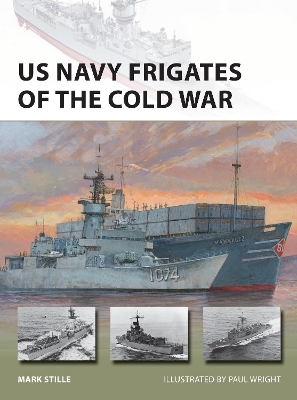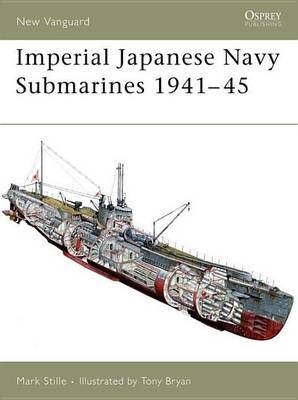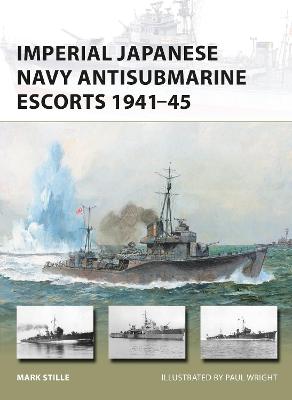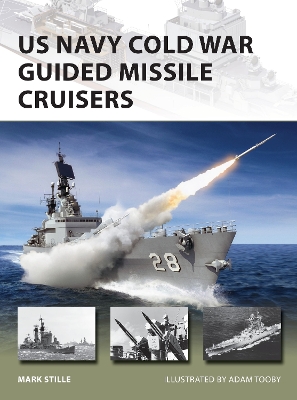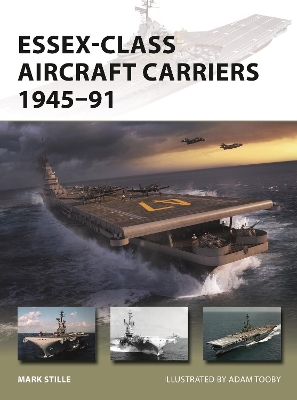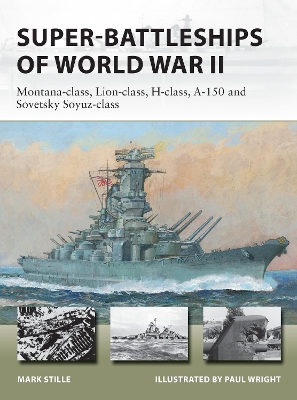New Vanguard
5 primary works • 27 total works
v. 135
This volume will detail the history, weapons and tactics of the IJN's ASW escorts. These include the Momi class of second-rate destroyers, the Tomodzuru and Ootori classes of torpedo boars, and the several types of ASW escorts built from 1937 up to the end of the war.
Fully illustrated with specially commissioned artwork, this fascinating volume examines the history of the Regia Marina's cruisers during World War II where they came up against the might of the British Royal Navy.
The cruisers served in the front lines of the Cold War and many saw combat service, engaging in surface actions from Vietnam to the Persian Gulf. Complementing the conventionally-powered missile cruisers was a much smaller number of expensive nuclear-powered cruisers, including the Long Beach, the USN's largest-ever missile cruiser. Until replaced by the Ticonderoga and Burke classes of Aegis ships, the USN's 38 missile cruisers were the most capable and important surface combatants in the fleet and served all over the globe during the Cold War. Using specially commissioned artwork and meticulous research, this illustrated title explores the story of these cruisers in unparalleled detail, revealing the history behind their development and employment.
The Essex class was the USN’s war-winning ship class of the Pacific War. Of the 24 ships completed, 14 saw action, making the Essex class the largest class of fleet aircraft carriers ever built. These ships had a fine balance of striking power, protection, and speed and were modernized during and after the war. There were five distinct programs carried out, adding not only angled flight decks for jet operations, but repeated upgrades to sensors, weapons, and equipment.
Essex-class carriers were used in a number of roles and provided the vast majority of US Navy air power in the Korean War, and a sizeable proportion of air power in the Vietnam conflict. However, as the “super carriers” began to enter service in the early 1960s, the Essex class was relegated to secondary roles– a single Essex carrier served until 1991 as the US Navy’s training carrier. This book provides an in-depth portrait of this important and enduring class of ship, and looks at its development and modifications while considering the many and varied actions it took part in.
At the start of World War II the battleship was still king, and all the major powers were designing even mightier battleships to surpass their most modern and powerful classes. But when World War II broke out, aircraft carriers would dominate naval warfare, and none of these monster warships were completed.
In this book, naval expert Mark Stille uncovers these lost battleships as they are reconstructed with superb new full-colour artwork. The US Navy wanted five Montana-class ships, based on the Iowas but with a heavier main battery and improved protection, and the Royal Navy began work on three 16in-gun Lion-class fast battleships. The German Navy developed its H-class designs: initially an improved Bismack-class, they became more fantastical, culminating in the 141,500-ton, 20in-gun H-44. The Japanese A-150 was based on the Yamato-class but with 20.1in guns, while the 15 ships planned for the USSR's Sovetsky Soyuz-class would have rivalled the Montanas in size.
Explaining the design, intended roles and fate of these ships, this is the story of the last battleship designs in history.
